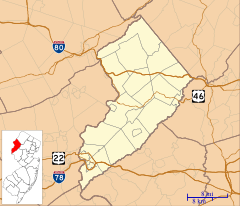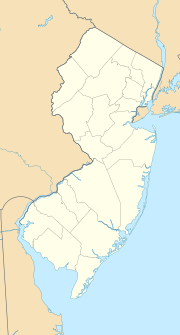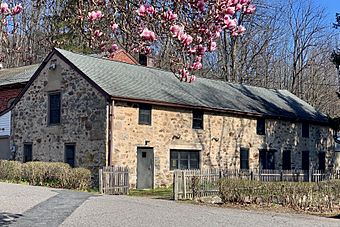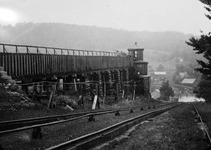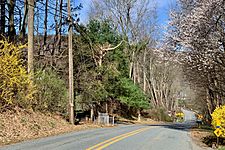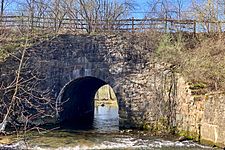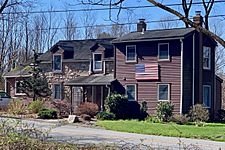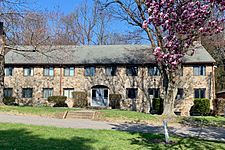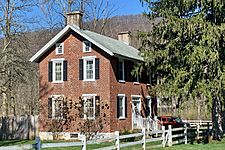Bowerstown, New Jersey facts for kids
Quick facts for kids
Bowerstown, New Jersey
|
|
|---|---|
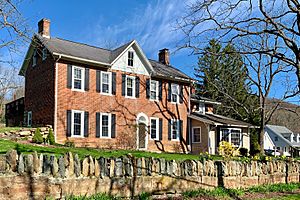
Old Bowerstown Road
|
|
| Country | |
| State | |
| County | Warren |
| Township | Washington |
| Named for | Michael B. Bowers |
Bowerstown is a small community in Washington Township, Warren County, New Jersey. It's not a town with its own government, but it's part of a larger township. The community is located near the Morris Canal and the Pohatcong Creek. It was started in 1829 when Jesse Vanetta and Michael B. Bowers built an iron factory there. Today, the entire village is part of the Bowerstown Historic District, which was added to important lists of historic places in 1996.
A Look Back: Bowerstown's History
Bowerstown began in 1829 with the building of an iron factory by Jesse Vanetta and Michael B. Bowers. The community grew around the Morris Canal, especially near a special ramp called Inclined Plane 7 West. This ramp helped boats move up and down hills on the canal. There was also a boat basin near the Pohatcong Creek.
In 1838, Peter Van Doren built a gristmill, which is a factory for grinding grain into flour, by the creek and the canal. Michael Bowers bought the iron factory in 1843. He focused on making iron plows, which are tools used for farming. Around the 1850s, the company that ran the canal built a house for the person who operated the inclined plane.
Later, in 1933, a company called Consumers' Research moved to the area. They built an office building between 1934 and 1935, and then a research lab from 1939 to 1940, on the land where the Bowers iron factory used to be. A woman named Mary Catherine Phillips, who was important in helping consumers, worked there. She wrote a book about beauty products and was part of the company's board. Her work is recognized on the New Jersey Women's Heritage Trail. In 1986, the local school district bought the office building to use for their main offices.
Exploring the Historic District
The Bowerstown Historic District is a special area that includes the old village. It's bounded by Bowerstown, Plane Hill, Lannings Trail, and Mine Hill roads. This district was added to the National Register of Historic Places on May 10, 1996. It's important because of its history in science, social life, communication, industry, building styles, and transportation from 1829 to 1945. There are 42 important buildings and features within this district.
At the heart of the district are the old Bowers Foundry building, made of stone, and the Consumers' Research office and lab buildings. These buildings show a style called Colonial Revival. You can also see a two-story brick house on Old Bowerstown Road with Federal and Victorian design elements. Another two-story brick house on Mine Hill Road has a Greek Revival style with some Italianate touches.
After the Morris Canal stopped being used in 1924, Washington Township bought parts of it. This included Inclined Plane 7 West and the aqueduct, which was a bridge that carried the canal over the Pohatcong Creek. They used these areas to build Plane Hill Road. The house where the canal operator lived is still there, though it has been updated. You can even see large stones from the old inclined plane used in the base of a wall by a house on Old Bowerstown Road!
Gallery


